Big Mac Index
description: informal way of measuring the purchasing power of two currencies
17 results
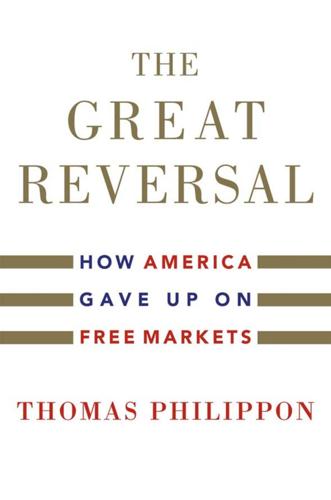
The Great Reversal: How America Gave Up on Free Markets
by
Thomas Philippon
Published 29 Oct 2019
When we make international comparisons of real income, we need to look at the prices of the items that people actually consume. So how do we proceed? The first thing we can do is to focus on items that everyone consumes—or at least, that are sold everywhere. In 1986, the Economist invented the Big Mac index. It was half a joke and half an attempt to make the theory of PPP more digestible (pun intended). They went around the world and collected prices of the same McDonald’s sandwich. This may seem frivolous, but it is actually quite useful, because McDonald’s requires a large degree of consistency in its products, regardless of where they are made and sold.
…
We would say that the purchasing power parity (PPP) Big Mac exchange rate was $1 per euro. However, in that same year, the currency markets valued the euro at $1.13. In that sense, the euro as a financial asset looked a bit expensive, or “overvalued” as we would say in the language of international economics. You might reasonably object that the Big Mac index is too narrow. People (thankfully) do not consume only Big Macs. Economists have built other indexes that attempt to do something similar on a larger scale. The United Nations, together with the University of Pennsylvania, established the International Comparisons Program (ICP) in 1968. The goal of the ICP is to facilitate price comparisons across countries.a They conduct global surveys of prices (in about 150 countries and for 1,000 products) to compute their estimate of PPP exchange rates.
…
profit rate: The ratio of income net of depreciation over the stock of capital at the beginning of the year. purchasing power parity (PPP): A measurement tool to compare standards of living between countries by using the price of a common basket of goods and services. PPP can be used to define exchange rates and to compare real income per capita. The Big Mac index is PPP using the price of Big Mac sandwiches. pure monopoly: A situation in which there is only one seller in a market, such as when a firm is the only supplier of a particular product in a particular location. Cases of pure monopoly are relatively rare. real GDP: Gross domestic product adjusted for inflation.

Losing Control: The Emerging Threats to Western Prosperity
by
Stephen D. King
Published 14 Jun 2010
On the most conservative estimates, which merely measure the size of each economy in dollars, low- and medium-income economies (which include all the emerging markets) are, collectively, about the same size as the US economy. If we pretend that the identical product should have the same cost across different countries and geographies (using either formal purchasing power parity calculations or The Economist’s Big Mac index), the emerging economies are, collectively, about twice the size of the US.10 The emerging economies have come a long way since the 1970s, a result of rapid economic growth year-in, year-out. Yet they still have a long way to go. Per-capita incomes are in some cases only a tiny fraction of those in the US or in the developed world more generally.
…
(i) Alaska (i), (ii) Albert, Prince (i) allocation of resources (i), (ii), (iii), (iv), (v), (vi) American International Group (i) Anglo-Russian Entente (i) Annan, Daniel (i) Argentina (i), (ii), (iii) Asia economic growth (i) inflation (i) Russian energy supply (i) trade (i) the West’s diminished status (i), (ii), (iii), (iv), (v), (vi) Asian economic crisis anarchy in capital markets (i), (ii), (iii) migration (i) price stability (i), (ii), (iii) state capitalism (i) Asiatic Barred Zone Act (i) asset-backed securities (i), (ii), (iii), (iv) assets China’s reserve currency (i) population demographics (i), (ii), (iii) price stability (i), (ii), (iii), (iv) savings (i) state capitalism (i), (ii), (iii), (iv), (v) Audi (i), (ii), (iii) Austria (i), (ii) baby-boomer generation (i), (ii), (iii), (iv), (v) balance of payments (i), (ii), (iii), (iv), (v), (vi), (vii), (viii), (ix) Balassa, Bela (i) Balassa–Samuelson condition (i), (ii) Bank of England (i), (ii), (iii), (iv), (v) banks anarchy in capital markets (i), (ii), (iii), (iv), (v) capital controls (i) price stability (i) printing money (i), (ii) protectionism (i) state capitalism (i), (ii), (iii) trade (i) Barbone, L. (i) Beattie, Alan (i) Beijing (i), (ii), (iii), (iv), (v), (vi), (vii) Belarus (i), (ii) Bernanke, Ben (i), (ii) Bernard L. Madoff Investment Securities LLC (i) Besley, Timothy (i) Big Mac index (i) bilateral deals (i), (ii), (iii), (iv), (v) billionaires (i) bio-fuels (i) Blair, Tony (i) Bloomberg (i) Bloom, David E. (i) Boeing (i) Bolshevik Revolution (i), (ii) bonds (i), (ii), (iii), (iv), (v), (vi), (vii) Bontch-Osmolovsky, M. (i) booms and busts (i), (ii), (iii), (iv), (v), (vi) border controls (i), (ii), (iii), (iv), (v), (vi) Boston Tea Party (i) BP (i) Brannan, Sam (i) Brazil anarchy in capital markets (i) inequalities (i), (ii), (iii), (iv) Olympic Games (i) population demographics (i), (ii) price stability (i), (ii) state capitalism (i), (ii) trade (i), (ii), (iii), (iv) the West’s diminished status (i), (ii), (iii) Bretton Woods exchange-rate system (i), (ii), (iii), (iv), (v), (vi) British East India Company (i), (ii), (iii), (iv) British Empire (i), (ii), (iii), (iv), (v) British Energy plc (i) British Nationality and Status Aliens Act (i) British National Party (i) Brown, Gordon (i), (ii), (iii), (iv), (v) bubonic plague (i), (ii) Buddhism (i) Bulgaria (i), (ii), (iii) Bundesbank (i) Bush, George W.
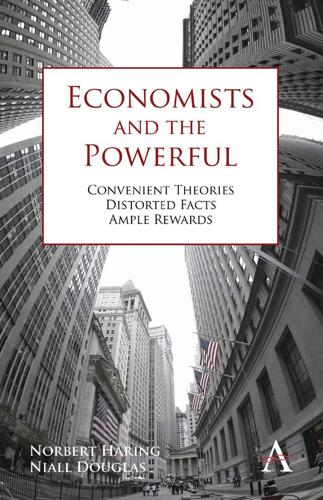
Economists and the Powerful
by
Norbert Haring
,
Norbert H. Ring
and
Niall Douglas
Published 30 Sep 2012
This is true even though they do the exact same job with virtually the same equipment (Ashenfelter and Jurajda 2010). According to The Economist newspaper’s famous Big Mac index, the most expensive Big Mac in the world at the end of 2011 was in Switzerland at US$6.81. The cheapest was in the Ukraine at just US$2.11. Yet a Swiss worker earns nearly three of their Big Macs per hour, while a Columbian worker earns just 23 percent of one of their Big Macs (Ashenfelter and Jurajda 2010; The Economist Big Mac Index January 2012). In fact, as Ashenfelter and Jurajda show, there is a low correlation between wages and Big Mac prices in all but Western countries, where high minimum wage rates force the price of a Big Mac.
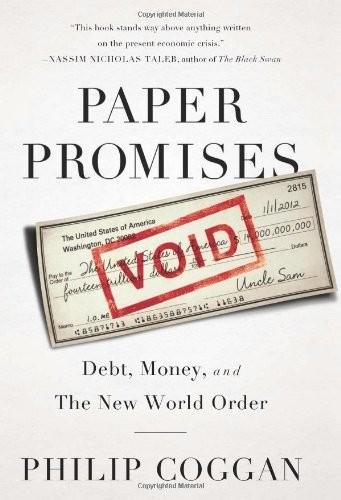
Paper Promises
by
Philip Coggan
Published 1 Dec 2011
The indices that measure inflation include very wide ranges of goods and services, many of which will have no bearing on international competitiveness. But even when economists looked at more specialized measures of inflation, such as producer prices, they found that exchange rates in the floating era could spend long periods being cheap or dear on a PPP basis. The Economist publishes a ‘big Mac index’ which compares the cost of burgers in different parts of the world; often, the comparison makes some currencies look very cheap or very expensive. In short, when one looks at the economic fundamentals, trade deficits and relative prices, modern currencies can depart from ‘fair value’ for prolonged periods.
…
Index AAA Status of US Adams, Douglas Adams, John Addison, Lord Adenauer, Konrad adjustable rate mortgages adulterating coins affluent society Afghanistan ageing populations agrarian revolution Ahamed, Liaquat AIG air miles Alaska Amazon.com Angell, Norman Anglo Irish Bank annuities Argentina Aristophanes Arkansas Asian crisis of 1997 – 8 asset prices assignats Athens Austen, Jane austerity Austria Austrian school Austro-Hungarian empire Aztecs B&Q baby boomers Babylon Bagehot, Walter bailouts balanced budget Baldwin II, King of Jerusalem Balfour, Arthur Bancor Bank for International Settlements bank notes Bank of England bank reserves bank runs bankruptcy codes Banque Generale Barclays Capital Baring, Peter Baring Brothers Barnes & Noble barter Basle Accords Bastiat, Frederic BCA Research BCCI bear markets Bear Stearns Beaverbrook, Lord Belgium Belloc, Hillaire Benn, Tony Benn, William Wedgwood Bernanke, Ben Bernholz, Peter bezant Big Bang Big Mac index bills of exchange bimetallism biofuels Bismarck, Otto von Black Death Black Monday black swan Blackstone Blair, Tony Blum, Léon BMW Bodencreditanstalt Bohemia Bolsheviks Bonnet, Georges Bootle, Roger Brady, Nicholas Brady bonds Brazil Bretton Woods system Brodsky, Paul Brooke, Rupert Brown, Gordon Bruning, Heinrich Brutus Bryan, William Jennings bubbles budget deficits budget surplus building societies Buiter, Willem Bundesbank Burns, Arthur Bush, George W.

Bread, Wine, Chocolate: The Slow Loss of Foods We Love
by
Simran Sethi
Published 10 Nov 2015
Ann Tutwiler, “Celebrating Smallholder Farmers and Rural Women—DG Dialogues,” Bioversity International, March 10, 2014, http://www.bioversityinternational.org/news/detail/celebrating-smallholder-farmers-and-rural-women-dg-dialogues/. 29.Mona Chalabi and John Burn-Murdoch, “McDonald’s 34,492 Restaurants: Where Are They?” The Guardian, July 17, 2013, http://www.theguardian.com/news/datablog/2013/jul/17/mcdonalds-restaurants-where-are-they#data. 30.D.H. and L.D., “The Big Mac Index: Global Exchange Rates, To Go,” The Economist, January 22, 2015, http://www.economist.com/content/big-mac-index. 31.Jack Linshi, “This Is McDonald’s Big Plan to Win You Over,” Time, October 22, 2014, http://time.com/3531339/mcdonalds-earnings-regional-personal-menu/. 32.Michael Moss, Salt Sugar Fat: How the Food Giants Hooked Us (New York: Random House, 2014). 33.

As the Future Catches You: How Genomics & Other Forces Are Changing Your Work, Health & Wealth
by
Juan Enriquez
Published 15 Feb 2001
For an official position, look at U.S. Department of Education, National Center for Education Statistics (NCES), Pursuing Excellence: A Study of U.S. Twelfth-Grade Mathematics and Science Achievement in International Context, NCES 98–049 (Washington, D.C.: U.S. Government Printing Office, 1998). 9. The Big Mac Index reflects the cost of purchasing this hamburger at McDonald’s restaurants throughout the world. It was created in 1986 by The Economist to look at purchasing-power parity. These figures are calculated by Reforma: www.reforma.com/flashes/negocios/big_mac/. Some of the actual differences between countries may be even larger than they appear in these numbers because the average manufacturing wage is divided by the cost of a Big Mac, and a burger costs $2.09 in the United States and $1.10 in India.
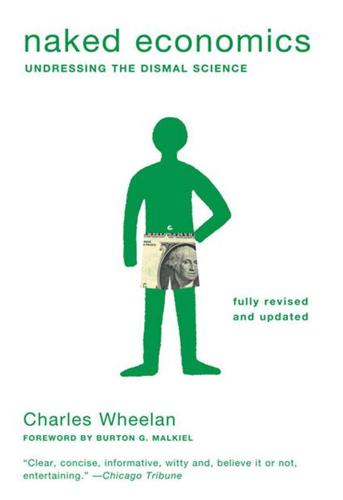
Naked Economics: Undressing the Dismal Science (Fully Revised and Updated)
by
Charles Wheelan
Published 18 Apr 2010
At official exchange rates, a Mumbai salary may look very low when converted to dollars, but because many nontradable goods and services are much less expensive in Mumbai than in the United States, a seemingly low salary may buy a much higher standard of living than the official exchange rate would suggest. Currencies that buy more than PPP would predict are said to be “overvalued” currencies that buy less are “undervalued.” The Economist created a tongue-in-cheek tool called the Big Mac Index for evaluating official exchange rates relative to what PPP would predict. The McDonald’s Big Mac is sold around the world. It contains some tradable components (beef and the condiments) and lots of nontradables (local labor, rent, taxes, etc.). The Economist explains, “In the long run, countries’ exchange rates should move towards rates that would equalize the prices of an identical basket of goods and services.
…
The Icelandic krona lost half its value. The stock market fell by 90 percent; GDP fell 10 percent; unemployment hit a forty-year high. People were angry—just like in Argentina. One woman told The Economist, “If I met a banker, I’d kick his ass so hard my shoes would be stuck inside.” And she was a preschool teacher.10 Even the Big Mac Index had a sad postscript in Iceland. In October 2009, Iceland’s three McDonald’s restaurants closed after becoming victims of the financial crisis. McDonald’s required that its Iceland franchises buy their food inputs and packaging from Germany. Because the krona had plummeted in value relative to the euro and because the government had imposed high import tariffs, the cost of these inputs from Germany roughly doubled.
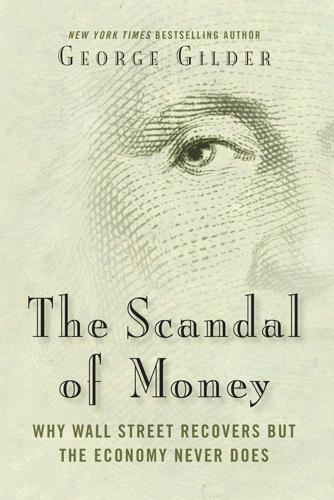
The Scandal of Money
by
George Gilder
Published 23 Feb 2016
Pursuing the calculation of “purchasing power parity,” they try to gauge which changes signify the “real” level of prices. MIT includes literally millions of prices around the world in its comprehensive index called “Beta.” Giving up on all these perplexities, the Economist sometimes throws up its hands and resolves on a global “Big Mac” index. Others prefer a “Brooks Brothers Index” tying the price of a business suit to an ounce of gold.9 Under the “hayek” regime, the management of the basket on which all valuations and arbitrage will rely becomes all-important. The central question in political economy would then become the procedure and timing of basket management.
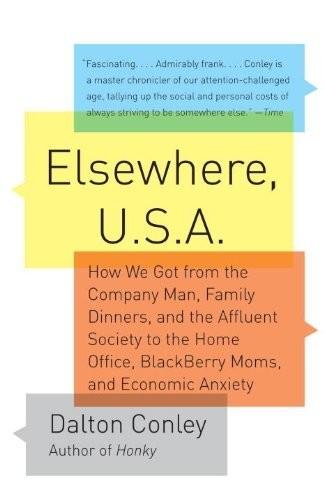
Elsewhere, U.S.A: How We Got From the Company Man, Family Dinners, and the Affluent Society to the Home Office, BlackBerry Moms,and Economic Anxiety
by
Dalton Conley
Published 27 Dec 2008
This statistical insight about inflation helps us comprehend the very real sense that material standards of living for even the bottom half of Americans have actually improved. Some measures try to get around this problem by calculating labor time. Take, for example, The Economist magazine’s “Big Mac Index,” which compares the price of the famous McDonald’s hamburger across the globe in terms of hours needed to work to afford one. Of course, what if you are a vegetarian? Or would do without a Big Mac in order to save up for a new iPhone? There’s no easy way around the fact that our tastes and preferences change with the development of new products.
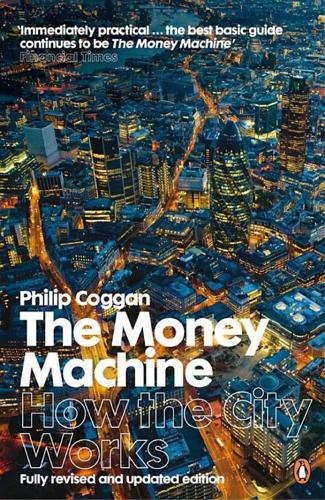
The Money Machine: How the City Works
by
Philip Coggan
Published 1 Jul 2009
The study of the effect of prices on exchange rates has focused on the purchasing power parity (PPP) theory. At its simplest the theory argues that exchange rates will tend towards the point at which international purchasing power is equal. In other words, a hamburger would cost the same in any country, something The Economist highlights in its Big Mac index. In turn that means differential inflation rates are the most important driving factor behind exchange-rate movements. Inflation matters because high prices make a country’s goods uncompetitive. If the UK’s inflation is 10 per cent per annum while the US’s is zero, British goods will be 10 per cent more expensive than American goods after a year has elapsed.

How to Speak Money: What the Money People Say--And What It Really Means
by
John Lanchester
Published 5 Oct 2014
This is a surprisingly useful finding that is often employed to detect phoney figures in areas such as accounting and science. The math is immensely complicated, and I would love to give a full explanation of it here, but unfortunately I have to rush off now because I’ve just remembered I’ve got a thing. Big Mac index The Economist’s attempt to answer the question of how expensive it is to live in different countries. Since currencies, living costs, food, rents, wages, and many other factors vary so much from place to place, how can you reliably compare the cost of living? The magazine’s answer: by using the price of something that is in essence the same everywhere, the Big Mac.
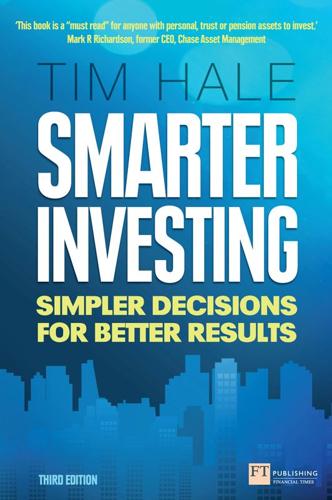
Smarter Investing
by
Tim Hale
Published 2 Sep 2014
First, it is a rate of exchange and in itself has no economic return-generating mechanism like being an owner or a lender. Second, over the long run the exchange rate should be in line with the purchasing power parity between two countries. This principal is succinctly explained by the Economist and their well-known Big Mac Index: ‘Burgernomics is based on the theory of purchasing-power parity, the notion that a dollar should buy the same amount in all countries. Thus in the long run, the exchange rate between two countries should move towards the rate that equalises the prices of an identical basket of goods and services in each country.
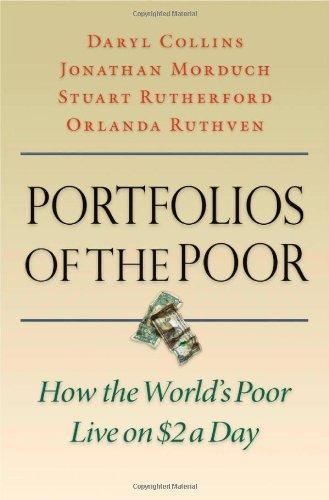
Portfolios of the poor: how the world's poor live on $2 a day
by
Daryl Collins
,
Jonathan Morduch
and
Stuart Rutherford
Published 15 Jan 2009
See http://www.un.org/millenniumgoals. 247 NOTES TO CHAPTER ONE 6. An excellent source showing how to calculate dollar-per-day estimates from local currency incomes is Sillers 2004. More on the World Bank International Comparison program and new data can be found at www.worldbank .org. For a related take on the same set of issues see The Economist’s “Big Mac” index at http://www.economist.com/markets/bigmac/about.cfm. The 1993 and 2005 figures in table 1.1 are calculated using consumer prices indices from the International Monetary Fund’s International Financial Statistics. The 2005 comparison using PPP conversion rates are the latest available at the time of writing. 7.
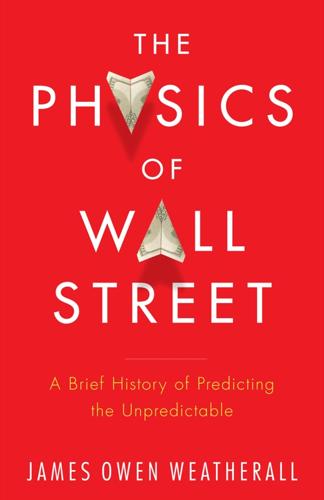
The Physics of Wall Street: A Brief History of Predicting the Unpredictable
by
James Owen Weatherall
Published 2 Jan 2013
Another index that one often hears about is the Consumer Price Index (CPI), which is supposed to be a number that captures information about the cost of the ordinary things that a person living in a U.S. city buys, such as food and housing. Index numbers are crucially important for economic policy because they provide a standard to compare economic indicators over time, and from place to place. (The Economist magazine has proposed a particularly straightforward index, called the Big Mac Index. The idea is that the value of a Big Mac hamburger from McDonald’s is a reliable constant that can be used to compare the value of money in different countries and at different times.) Together, Malaney and Weinstein developed an entirely novel way of solving the index number problem by adapting a tool from mathematical physics known as gauge theory.
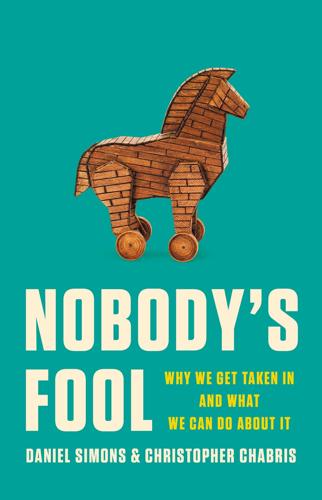
Nobody's Fool: Why We Get Taken in and What We Can Do About It
by
Daniel Simons
and
Christopher Chabris
Published 10 Jul 2023
It could just be that, due to the influence of Carlisle, the field of anesthesiology research is doing a better job of exposing an alarming level of fraud that exists in many other fields too. 38. McDonald’s hamburgers are so consistent from store to store and even country to country that the Economist was able to create an index to compare living standards across nations by measuring how many Big Macs the average salary could buy in each country [https://www.economist.com/big-mac-index]. Chapter 6: Familarity—Discount What You Think You Know 1. Artiles has a history of questionable behavior. As Curt Anderson reported, “In 2017, he resigned from the state Senate after using racial slurs in a conversation with two Black legislators in a Tallahassee bar. Then it was revealed Artiles used money from his political committee to hire a former Playboy model and Hooters girl as a consultant.”

The Rise and Fall of Nations: Forces of Change in the Post-Crisis World
by
Ruchir Sharma
Published 5 Jun 2016
This is the normal state of confusion about the value of currencies. In an effort to improve clarity, a number of expert sources have attempted to rank how expensive countries are by creating indexes, comparing current prices for things everyone can relate to. The granddaddy of this category is The Economist’s Big Mac Index, but as McDonald’s falls out of style, other analysts have started comparing prices for Starbucks coffee or other globally available goods. Deutsche Bank’s annual “Mapping the World’s Prices” report uses multiple categories, from the local price of the iPhone 6 and Levi’s 501s to the cost of a weekend getaway, a date, and a haircut, but its conclusion still acknowledges the basic subjectivity of the exercise.
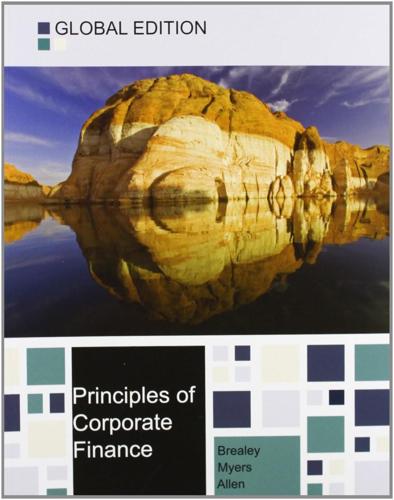
Principles of Corporate Finance
by
Richard A. Brealey
,
Stewart C. Myers
and
Franklin Allen
Published 15 Feb 2014
L., 741 Berndt, A., 587n Bertrand, M., 297n, 471n, 873, 873n Best-efforts underwriting, 379 Beta asset, 225–226, 227–229 calculating, 181–182 cash-flow, 227 changes in capital structure and, 436–437 company, 219–220 defined, 708, 881 earnings, 227 estimating, 222–224 impact of borrowing on, 195–197 industry, 224 in market model, 325 market risk and, 178–179 portfolio risk and, 178–182, 198–204 project, 219–222 relevering, 492–493, 494n unlevering, 492–493, 494n Betton, S., 830 Bhagat, S., 844n Bhandari, J. S., 851n, 857 Bharath, S. T., 853n BHP Billiton, 173, 806 Biases, in profitability measures, 307–313 Biddle, G. C., 339, 339n Bid price, 48 Big Mac Index, 700, 701 Big-ticket leases, 652 Bikhchandani, S., 889n Billington, Corey A., 573 Binomial method of option pricing, 540–545 Black-Scholes model and, 549 decision trees and, 544–545 defined, 540 general binomial method, 543–544 two-step, 541–543 Biomet, 845–846 Bizjak, J. M., 304n BK Vision, 353 Black, B., 374n Black, Fischer, 201n, 202n, 203n, 209, 536, 536n, 545–551, 546n, 555 Black Monday (1987), 171 Black-Scholes option pricing model, 545–551, 576n, 882 binomial method and, 549 development of, 545–551 using, 546–548 to evaluate implied volatilities, 550–551 for executive stock options, 528, 549, 550, 551 to value portfolio insurance, 550 to value warrants, 549–550 Blackstone Group, 837, 845–848 “Black swans,” 191n Blitzen Computer, 512 Blue-sky laws, 378 BNP, 812 BNP Paribas, 379, 623n Board of directors compensation committee, 303–304 connections with CEO, 298–299, 301–302 control rights and, 348, 352, 865–876 European, 867–869 mergers and, 847–850 role of, 5, 298–299, 303–304 voting procedures and, 352–354 Boatmen’s Bancshares, 812 Bodie, Zvi, 312n Boeing, 3, 135, 258–259 Bohr, Niels, 13 Bolton, P., 878 Bond(s).